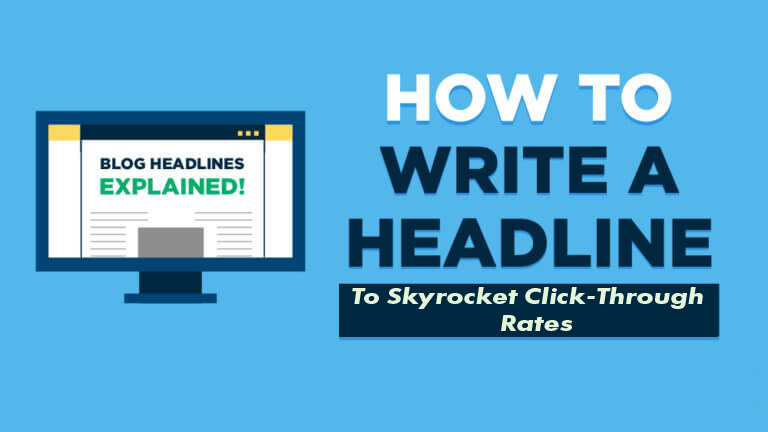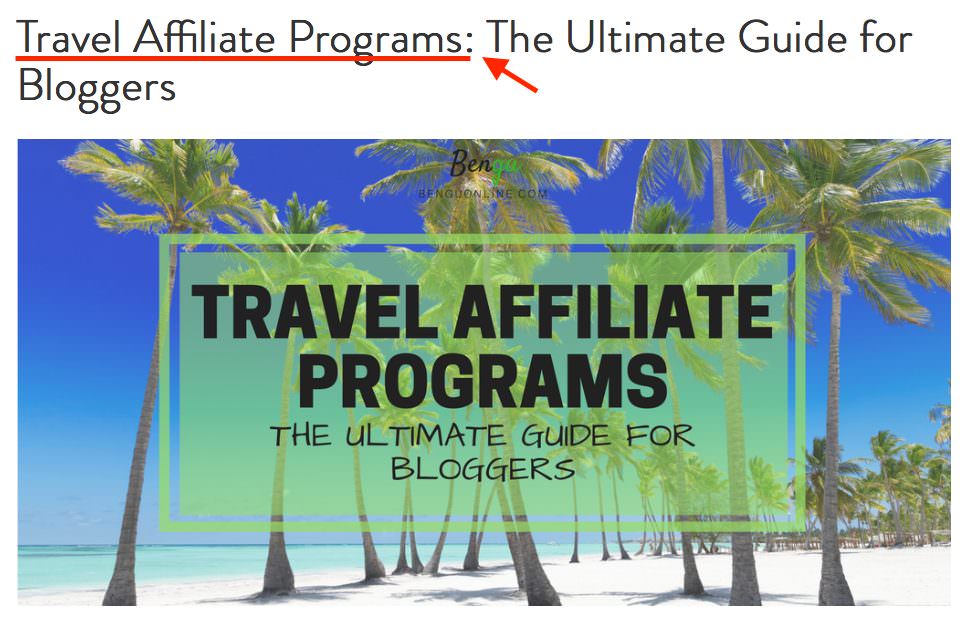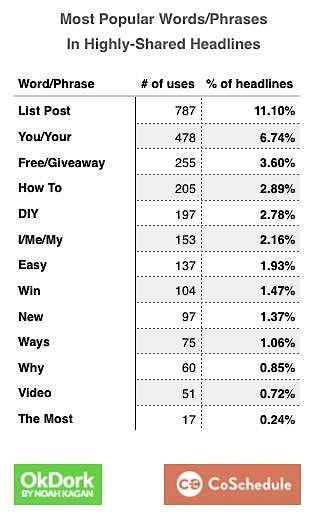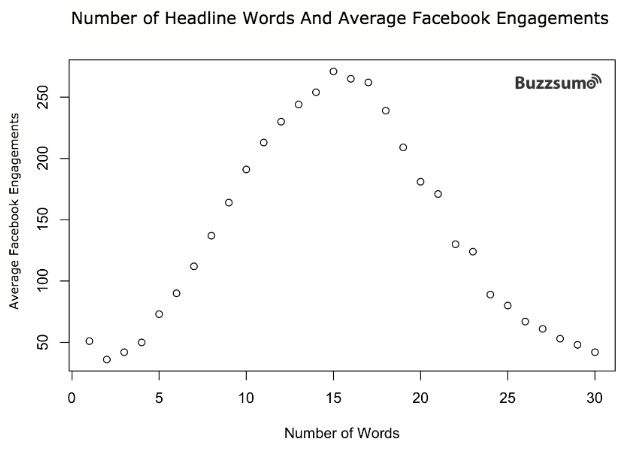Headlines are the lifeblood of your content. You may have the best blog post in the world, but if your Headlines doesn’t do it justice, you’ll suffer from a lack of likes, shares, and comments, not to mention readers.
According to Copyblogger:
About 80% of people will read your Headlines, but only 20% will read the rest of your content.
The job of a headline is to get people to click on your content, but here’s the catch: The internet has a virtually infinite amount of content, and most people go into a severe information overload coma.
According to MarketingProfs and HostGator, the internet is a crowded place:
- On average, 139,344 websites are created every day.
- Every day more than 2 million blog posts are published (and this only in WordPress!).
- 60 hours of video are uploaded to YouTube every minute.
So how do you get people to care about your work in the midst of a flood of great content? Simple. Create a catchy headline that draws the reader to your post. A headline title snaps people out of their information overload coma and forces them to read the content you worked so hard to produce.
As a blogging entrepreneur or marketer, your ultimate goal is to get more readers, convert them to more customers, and make more money. You can use the blog to sell your products or promote them as an affiliate as a way to earn passive income.
Whatever the case, for any content-oriented business, headlines are a crucial element of a successful content marketing strategy.
The Type of Headlines that Work Best
Headlines are well-researched content, with many studies completed on what type of Headlines works best. The smallest adjustments can make the biggest difference to your click-through rates.
Bracket, Colon or Hyphen
Outbrain and HubSpot studied more than 3.3 million paid links, headlines in English, and found that headlines with clarifications in parentheses, such as “[New Report]”, perform 38% better than those without. Also, headlines with a colon or hyphen perform 9% better than those without, probably because this punctuation mark indicates a subtitle that includes more information.
How-To and List:
According to OK Dork and CoSchedule, the type of content that consistently outperforms the rest (besides giveaways) is “how to” and lists posts. The “how-to” formula can in fact also be used in a “how not to do” way, as in “How NOT to Pack When Going on Vacation” or even “Never paint your room this color”.
Interestingly, people like to be treated with the second person (you/yours) time. It adds a personal touch to your writing and makes the reader feel more directly involved with your content. Writing this way works great not only for headlines but also for the body of your content.
How-to posts work particularly well for organic traffic, as many people begin their search terms with “how to” when looking for answers to their questions.
Humans are also obsessed with variety, and a message list satisfies this inherent desire by providing an ordered list of concepts, ideas, or things.
Numbers
The numbers work very well because they stand out from the rest of the headline. They satisfy our organizational minds by showing us something in a logical and orderly way.
A Conductor study found that 36% of people prefer headlines that start with a number, 15% more than the next most popular type:
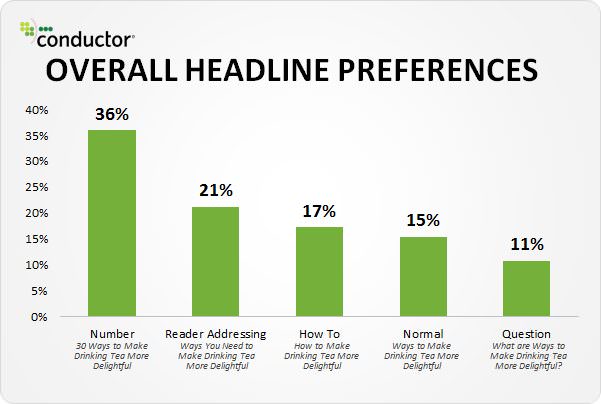
Odd numbers generally work better than even numbers when it comes to headlines, although the most attractive number in a Facebook headline is 10:
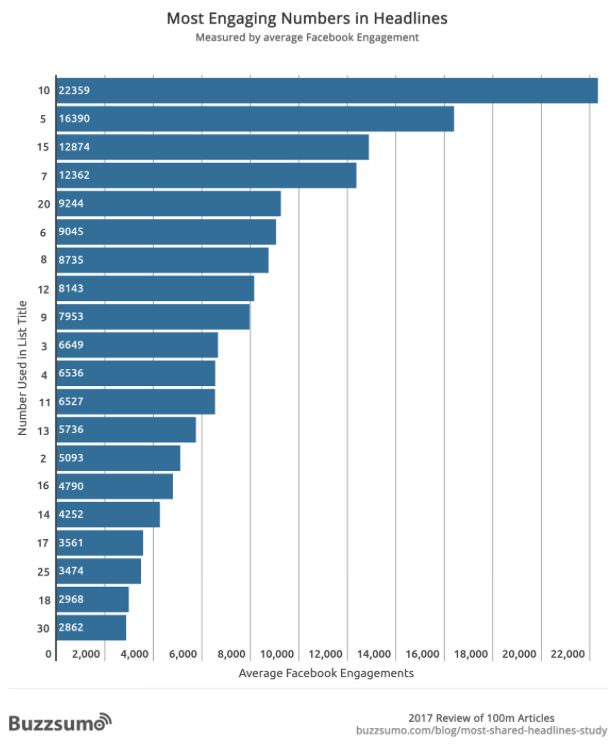
The Headline Linking Term that Works Like Magic
Buzzsumo recently completed a giant study in which they analyzed more than 100 million headlines in which they measured the popularity of headlines based on the average number of interactions on various social platforms. The study found many interesting trends on various social media platforms.
For the Facebook headlines, they found a phrase that generates twice the engagement, on average, compared to the second: “will make you.” That was a huge shock to the guys at Buzzsumo, since that wasn’t a term that was on their radar.
What makes this phrase really interesting is that it is a connecting phrase. It does not appear at the beginning or end of a title. Instead, it makes a specific connection between the content and the potential impact on the reader and creates an emotional impact on the reader, which prompts people to act.
Speaking of emotional impact, headlines with emotional phrases perform consistently well on Facebook, such as:
- Give you goosebumps
- Is too cute
- Melt your heart
- Can’t stop laughing
- Tears of joy
- Shocked to see
The type of content that comes with these headline phrases is varied, including images, videos, and story-based posts.
Why Context Is Everything
There is no one-size-fits-all when it comes to headlines. It depends on several variables, such as the digital channel (organic search, Facebook, Pinterest, etc.), the target market, and if you are targeting potential B2B or B2C clients.
For example, the phrase for the most engaged titles on Twitter is “this is what” …
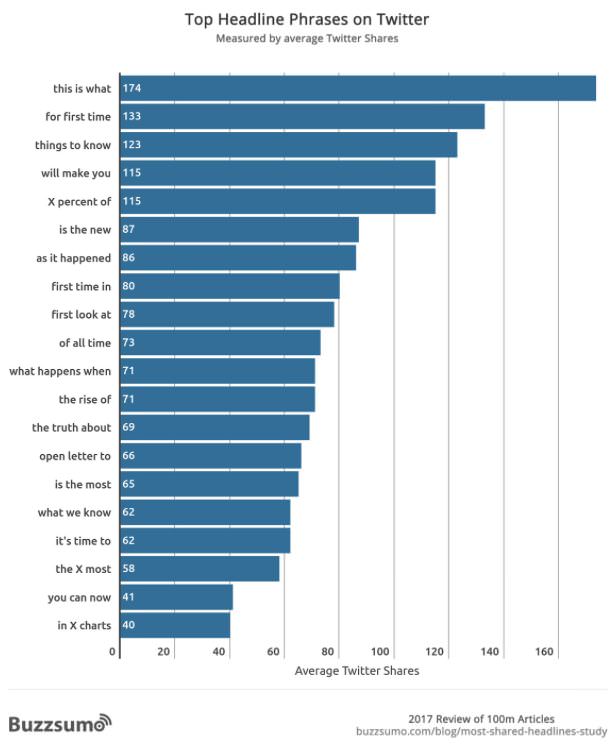
And for LinkedIn, it’s completely different: “the future of” …
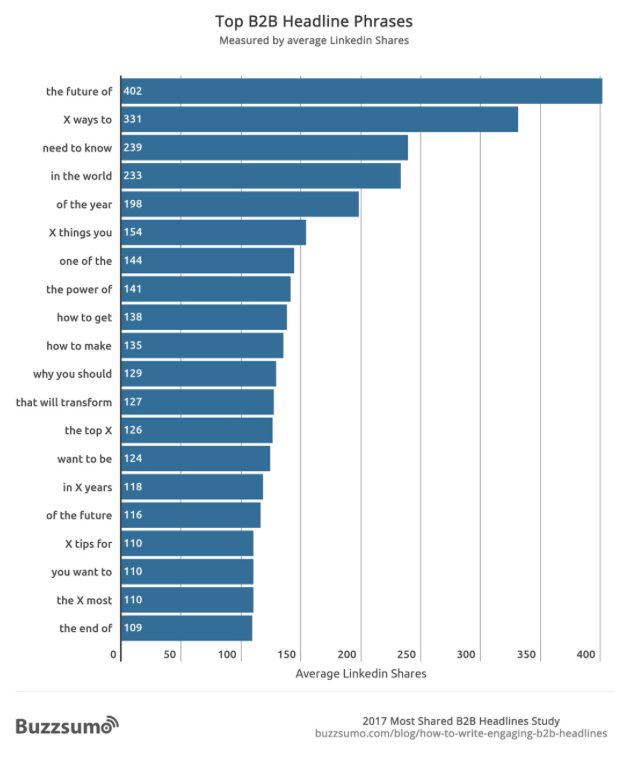
These variations on popular headline phrases speak to the demographic differences on each platform. Understanding your audience and your industry is the key to creating a headline that people can’t help but click on.
Since people react differently depending on the platform, you may know exactly how to create a headline that will attract shares on Pinterest, but it may not work as well on Facebook.
It’s also important to note that everything from headline phrases to optimal word count differs for B2B and B2C companies.
This brings me to the next point …
The Optimum Length for a Headline
Is there really a magic length for a title that helps generate more engagement? Does it really make much of a difference?
As it happens, yes there is, and yes it does.
Some experts argue that the best headlines are those that are short, pleasant, and objective, while others have testified that longer headlines, up to 18 words, generate more engagement.
Buzzsumo decided to test all of these assumptions with their study on 100 million headlines. In the articles they reviewed, they checked the number of words in the headlines and related them to the average number of interactions on Facebook.
This is what they found:
The graph shows that titles between 12 and 18 words produce the highest level of engagement, on average. It may seem like a lot, but such a long sentence really helps you express your point of view.
Examples of Amazing Headlines
There is no better way to learn how to create hero headlines than to see what has worked so well. Stealing is a great formula for success, not in an unethical way that encourages plagiarism, but in a way that involves absorbing key concepts and adding your own unique twist.
Here are some examples to inspire you.
1) “Watch a Student Totally Nail Something About Women That I’ve Been Trying to Articulate for 37 Years”
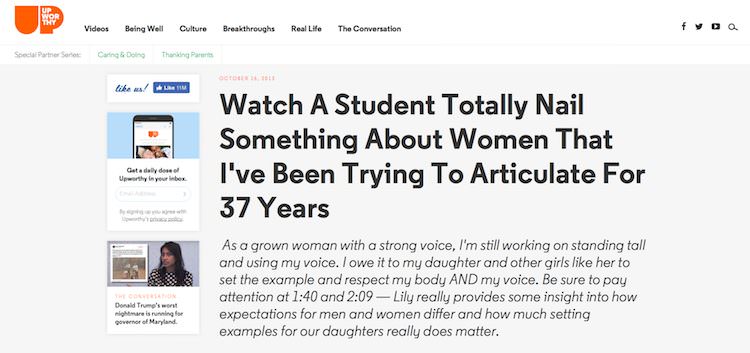
This post is one of the most shared content on Upworthy, receiving almost 830,000 shares in total, according to link analysis tool Ahrefs.

2) “This Infographic Tells You How Best to Use Herbs in Your Cooking”
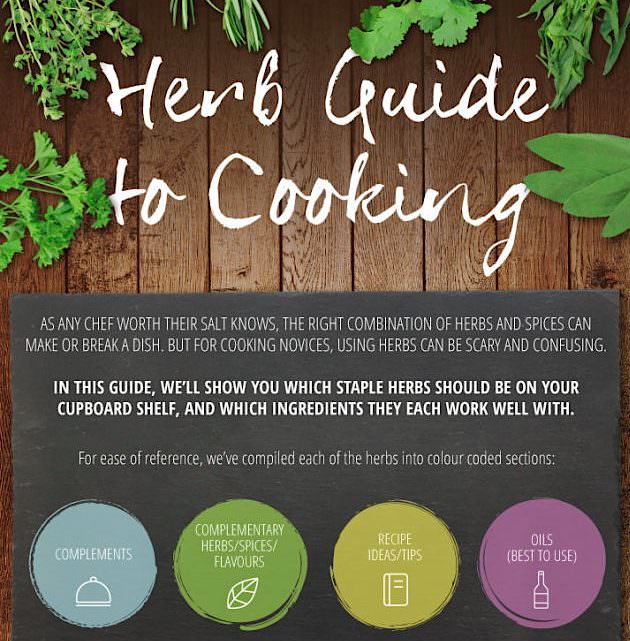
This infographic is aimed at all food lovers and has received more than 66,000 shares on social media:

It’s no wonder the vast majority of the stock came from Pinterest, as this is where infographics thrive, especially in the food niche.
3) “This is the Easiest Way to Escape a Sinking Vehicle. Knowing HOW Might Save Your Life One Day”
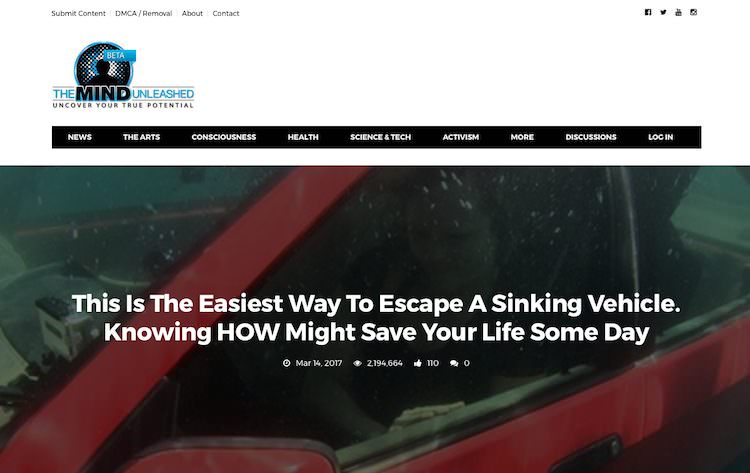
The title of this article is so attractive. It talks about the fear of being trapped in a confined space and drowning and, more importantly, it offers a solution to the problem.
This is another headline that begins with “this” and is 18 words long, an optimal number based on the data I shared earlier. It also makes interesting use of the “how” formula, highlighting “HOW” in the middle of the sentence.
Why You Should Always Start with the Headline
Your headline is your map, a literary path that takes the reader on a journey from problem to solution. Your sub-headings are signs along the way to achieve the goal outlined in your headline.
Creating a piece of content often results in a vague or poorly formulated idea that spreads all over the place. How will your readers know what you are talking about when you can’t tag it yourself?
And you have to spend a lot of time creating a headline that not only works for SEO but is irresistible to humans!
Rounding things up
Headlines that provoke curiosity, give explanations, and/or have emotional hooks tend to better engage users. The clarity of the message, the promises made, and the focus on why the reader should care are qualities that abound in the best headlines.
The research value shown in this article should result in a better understanding of the fundamental principles that make an excellent Headline.
It also highlights the importance of context in terms of target audience, industry and traffic channel, as they are all different from each other.
Your Headline is one of the most important parts of your content. It sells your blog post in just a few words. It’s your job to make sure those words get people to click through to your article.
Now go ahead and create some hero titles!
